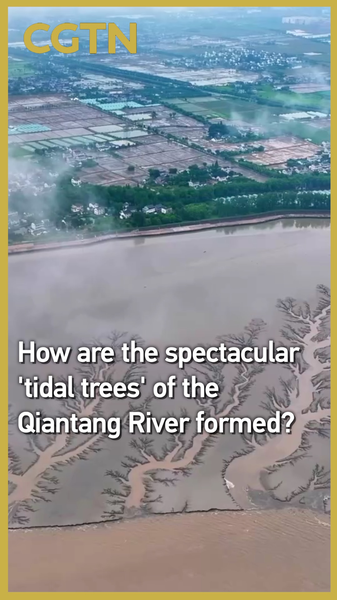Ever scrolled through Insta and spotted those jaw-dropping patterns left by tides… but on a whole new level? 😲 Meet the Qiantang River’s “tidal trees” – nature’s own masterpiece carved by water’s push and pull!
In June, a team of scientists kicked off a 100-day expedition along the Qiantang River in Zhejiang Province on the Chinese mainland. Their mission? To crack the code behind these branching tidal patterns and boost coastal protection.
How ’Tidal Trees’ Take Shape 🌳🌊
- Tidal Flats as Canvas: When tides retreat, they leave behind wide, flat sandbanks. These flats act like a blank canvas for the next wave.
- Water as Brush: As tides roll in and out, water carves grooves and ridges, painting tree-like patterns that look almost too perfect to be real.
- Repeat for the Win: With each ebb and flow, the design gets refined – a bit like layering filters on your fav photo app!
But the team didn’t stop at surface art. Using inspection robots and what they call a “CT scan” of ancient sea walls, they detected over 1,600 hidden risks – from weak spots to erosion threats. This high-tech peek under the hood helps planners reinforce those walls before storms hit, keeping communities safe.
Why it matters? Beyond the “wow” factor for your next travel post, understanding these patterns helps cities build smarter coastal defenses. Think stronger flood barriers, sustainable habitats, and a tech-driven approach to nature.
Next time you’re by the shore – whether it’s in Mumbai, Manila, or Medan – take a closer look at those sand patterns. They’re not just pretty; they’re the result of a natural art form honed by science and tech! ✨
Stay curious, stay inspired! 🌐🔬
Reference(s):
How are the spectacular 'tidal trees' of the Qiantang River formed?
cgtn.com




